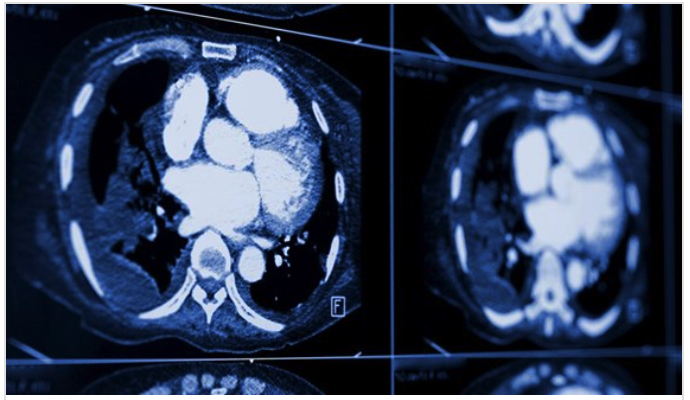Radiomics Model Developed by Moffitt Researchers Predicts Poor Lung Cancer Outcomes
 Moffitt Cancer Center researchers are working to improve the ability to identify lung cancer patients who are at a higher risk of poor survival through radiomics, an area of science that uses imaging, such as CT scans and MRIs, to uncover tumoral patterns and characteristics that may not be easy to spot by the naked eye.
Moffitt Cancer Center researchers are working to improve the ability to identify lung cancer patients who are at a higher risk of poor survival through radiomics, an area of science that uses imaging, such as CT scans and MRIs, to uncover tumoral patterns and characteristics that may not be easy to spot by the naked eye.
“Overtreatment is a serious adverse effect of cancer screening and early detection. Identifying patients that have aggressive, high-risk tumors associated with very poor survival outcomes would help oncologists decide which patients may need more aggressive treatment, such as adjuvant therapies. On the other hand, patients that have less aggressive, low-risk tumors have a better chance of cure by surgery and may not need adjuvant therapies,” explained Matthew Schabath, PhD, associate member of the Cancer Epidemiology Department at Moffitt.
Their newest study, published in Cancer Biomarkers, analyzed radiomic features of the internal and surrounding tumor area in images acquired from the National Lung Screening Trial.
They developed a model based on the radiomic feature of compactness and the volume doubling time of sequential patient images from baseline and the first and second follow-up. Their model divided patients into groups according to their risk of having poor outcomes. For example, the low-risk patient group had a five-year overall survival of 83.3%, while the high-risk patient group had a five-year overall survival of 25%. Similar results were observed for patients with early-stage lung cancers and for patients who were diagnosed with lung cancer at the first follow-up. The researchers also identified a volume doubling time cut-point that was able to differentiate between patients with aggressive versus low-risk tumors.
While additional studies are needed to confirm this model, the researchers hope that their findings will eventually allow physicians to differentiate patients who need to be aggressively treated from those patients who may require routine follow-up.
“The results from our analyses revealed that radiomics combined with volume doubling time can identify a vulnerable subset of screen-detected lung cancers that are associated with poor survival outcomes, suggesting that such patients may need more aggressive treatment. We hope to do further studies to validate our findings before applying our model to patient care,” said Jaileene Pérez-Morales, PhD, a postdoctoral fellow in the Cancer Epidemiology Department.